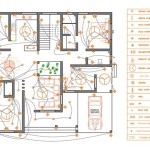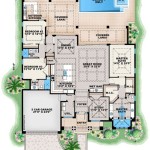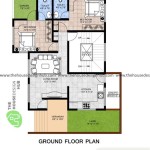Exploring the Essential Aspects of a Roman House Lesson Plan
Delve into the captivating world of ancient Rome by incorporating a comprehensive lesson plan on Roman houses into your curriculum. This engaging lesson will provide students with an in-depth understanding of the architectural features, social structure, and daily life within Roman residences.
Architectural Features
Roman houses varied greatly in size and opulence, ranging from modest urban dwellings to sprawling country villas. Key architectural elements include:
- Atrium: A central courtyard that served as the focal point of the house, providing natural light and ventilation.
- Impluvium: A pool in the atrium that collected rainwater.
- Tablinum: A room adjoining the atrium, used as an office or reception hall.
- Peristyle: A colonnaded courtyard, often found in larger houses, providing additional living space.
- Cubicula: Bedrooms, typically located on the upper floors.
Social Structure
Roman houses reflected the hierarchical nature of Roman society:
- Atrium: Reserved for the paterfamilias (head of the household) and important guests.
- Tablinum: Used for business or political discussions.
- Cubicula: Assigned to specific family members based on age and gender.
- Kitchen and dining room: Located in the back of the house, often used by slaves and lower-class members.
- Slaves' quarters: Typically located in cramped spaces, often underground.
Daily Life
Roman houses were bustling hubs of activity:
- Morning: The household head would greet clients and attend to business in the atrium.
- Afternoon: The family would gather for meals in the dining room.
- Evening: Leisure activities, such as reading, writing, and music, were enjoyed in the tablinum or peristyle.
- Slaves: Responsible for cleaning, cooking, and maintaining the household.
- Entertainment: Guests were entertained with banquets, plays, and gladiatorial contests.
Lesson Activities
To enhance student engagement, consider incorporating these activities:
- Virtual tour of the House of the Vettii in Pompeii.
- Simulated household activities, such as weaving or pottery-making.
- Role-playing scenarios to explore the social hierarchy.
- Analysis of primary sources, such as letters and inscriptions, to gain insights into daily life.
- Construction of a model Roman house to demonstrate architectural features.
Assessment
Assess student understanding through:
- Essays or presentations on specific aspects of Roman houses.
- Quizzes or tests to evaluate knowledge of architectural features and social structure.
- Creative projects, such as designing a Roman house floor plan or creating a timeline of daily life.
Conclusion
A well-structured Roman House Lesson Plan will immerse students in the fascinating world of ancient Roman architecture, social hierarchy, and daily living. Through hands-on activities and engaging assessments, students will gain a deeper appreciation for the complexities and significance of Roman civilization.

Roman Houses Ks2 History Information Powerpoint Twinkl

Roman Houses Ks2 History Information Powerpoint Twinkl

Roman Houses Ks2 History Information Powerpoint Twinkl

V Roma Project Sample Plan Of A Roman House Handout For 9th 10th Grade Lesson Planet

Roman Domestic Architecture Domus Article Khan Academy

Roman Villa Large Display Poster Teacher Made Twinkl

Ancient Greece Free Learn Bright

Roman Art Mosaics For Kids Lesson Teaching Pack Powerpoint

Roman Domestic Architecture Domus Article Khan Academy

Roman Numerals Free Learn Bright








